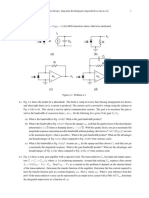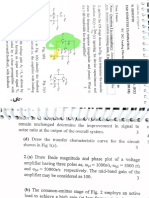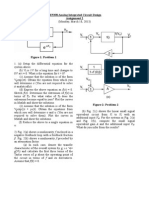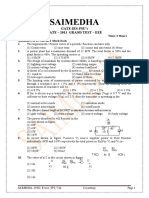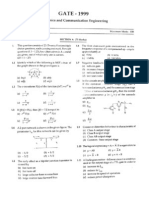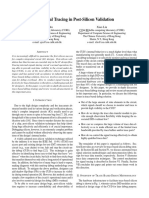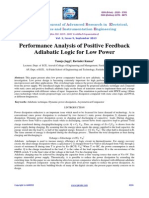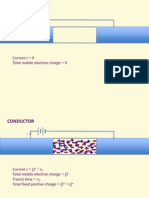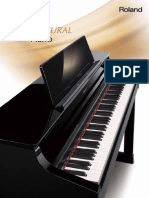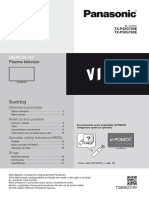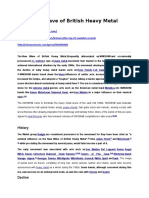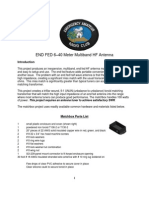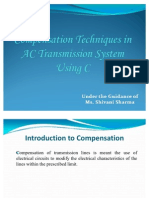EE5320: Analog Integrated Circuit Design; Assignment 1
Nagendra Krishnapura (nagendra@iitm.ac.in)
due on 2nd February 2015
Vi
+
-
Ve
f(Ve)
f()
linear voltage Vnl ,(in terms of Vi and the small signal parameters of Fig. 1(a)) which should be added
Vo
to the input so that (i) The part proportional to Vi2 is
the same as in Fig. 1(a), (ii) The part proportional to
Vi3 is the same as in Fig. 1(a).
(a)
Vi
ke
f()
Repeat the above computations of Vnl to make the
nonlinear output components in Fig. 1(c) to be the
Vo
same as that in Fig. 1(b).
(b)
Vnl
Vi
+
Vi
+
Vo
+
-
Ve
Vo
u dt
(k-1)R
Vf
(c)
(a)
Figure 1: Problem 2
+
-
1. Fig. 1(a) shows a nonlinearity f enclosed in a nega-
Ve
Vo
u dt
(k-1)R
Vf
tive feedback loop with a feedback fraction .
If the overall nonlinear transfer characteristic from
Vi to Vo is given by g(), determine the coefficients
(b)
of Taylor series of g(Vi ) around Vi = 0 in terms of
the Taylor series coefficients of f (). For simplicity,
Figure 2: Problem 1
Vi
assume f (0) = 0. Determine these up to the third
order.
2. Fig. 2(a) shows the amplifier studied in class.
Fig. 2(b) shows the same system with the input ap-
In Fig. 1(a), deterine the small signal linear gain
plied at a different place. Calculate the dc gain, the
-3dB bandwidth, and the gain bandwidth product of
k+ e = Ve /Vi . Fig. 1(b) shows f () preceded by a
gain ke . In other words, in terms of small signals,
the same signal is applied to f () in both Fig. 1(a) and
the system and compare them to the corresponding
quantities in Fig. 2(b). Also compare the loop gains.
(b). Determine the Taylor series of g1 () which is the
nonlinear function relating Vo to Vi in Fig. 1(b). As
Remark on conventional wisdom such as constant
gain bandwidth product, closed loop bandwidth =
before, compute it up to the third order and compare
the results to those obtained for Fig. 1(a).
unity gain frequency/closed loop dc gain. What is
the reason for the discrepancy?
The gain A in Fig. 1(c) is the same as the small signal
Draw an equivalent block diagram of Fig. 2(b) such
gain from Vi to Vo in Fig. 1(a). Determine the non-
that the classical form of feedback (sensed error in1
tegrated to drive the output) is clearly obvious (Hint:
compute the error voltage Ve ).
(k-1)R
R
impedance and Rin = while calculating the output impedance. What happens to these three quantities at high frequencies in each case?
kR
Vo
+
Vi
Vo
Vi
(a)
(b)
PM
u,loop m=0 bm sm
L(s) =
PN
n
s
n=0 an s
3. Fig. 3(a) and Fig. 3(b) shows amplifiers which realize gains of k and k respectively with ideal
opamps. Compare the following parameters of the
two circuits. Model the opamp as an integrator u /s.
(b) Bandwidth
(c) Differential (V+ (s) V (s)) and common
mode ((V+ (s) + V (s))/2) input voltages of
the opamps
Assuming that the sign of the gain is unimportant
in your application, what would make you choose
one over the other? Is there any reason to choose
Fig. 3(b) at all?
+
Rin
Rout
Vo
Rout
(b)
vopa
Rout
Rin
vopa
+
vopa
R
(c)
Io
load
Rout
Io
+
vopa
Ii
(k-1)R
6. Assume that an opamp has two poles at the origin
and a zero elsewhere, i.e. its transfer function is
given by
A(s) =
u z1
s2
�
�
s
1+
z1
plots of such a system and compare it to the other
good cases that you are already familiar with.
R
(a)
polynomials)
tor. Determine the location of the zero z1 for critical
damping. Sketch the loop gain magnitude and phase
R
Ii
Rin
like after the initial transient period? Give your
answer in terms of the poles of the additional factor (Hint: Split L(s) into a sum of two parts, one of
If this opamp is placed in unity feedback, determine
the natural frequency and the damping or quality fac-
Vo
(k-1)R
Vi
b0 = a0 = 1. What does the loop gain step response (inverse laplace transform of L(s)/s) look
which is u,loop /s; This problem doesnt require a
lot of algebra, but requires reasoning and basics of
(a) Input impedance
Rin
5. The loop gain L(s) of a system with N extra poles
and M < N extra zeros is given by
Figure 3: Problem 2
Vi
impedance at (a) dc, and (b) an arbitrary frequency
. For (b), set Rout = 0 when calculating the input
load
(d)
Figure 4: Problem 3: (a) VCVS, (b) CCVS, (c) VCCS,
(d) CCCS
4. Fig. 4 shows the four types of controlled sources
using an opamp. Model the opamp as an integrator u /s. For each of these, calculate the transfer ratio (output/input), input impedance, and output




